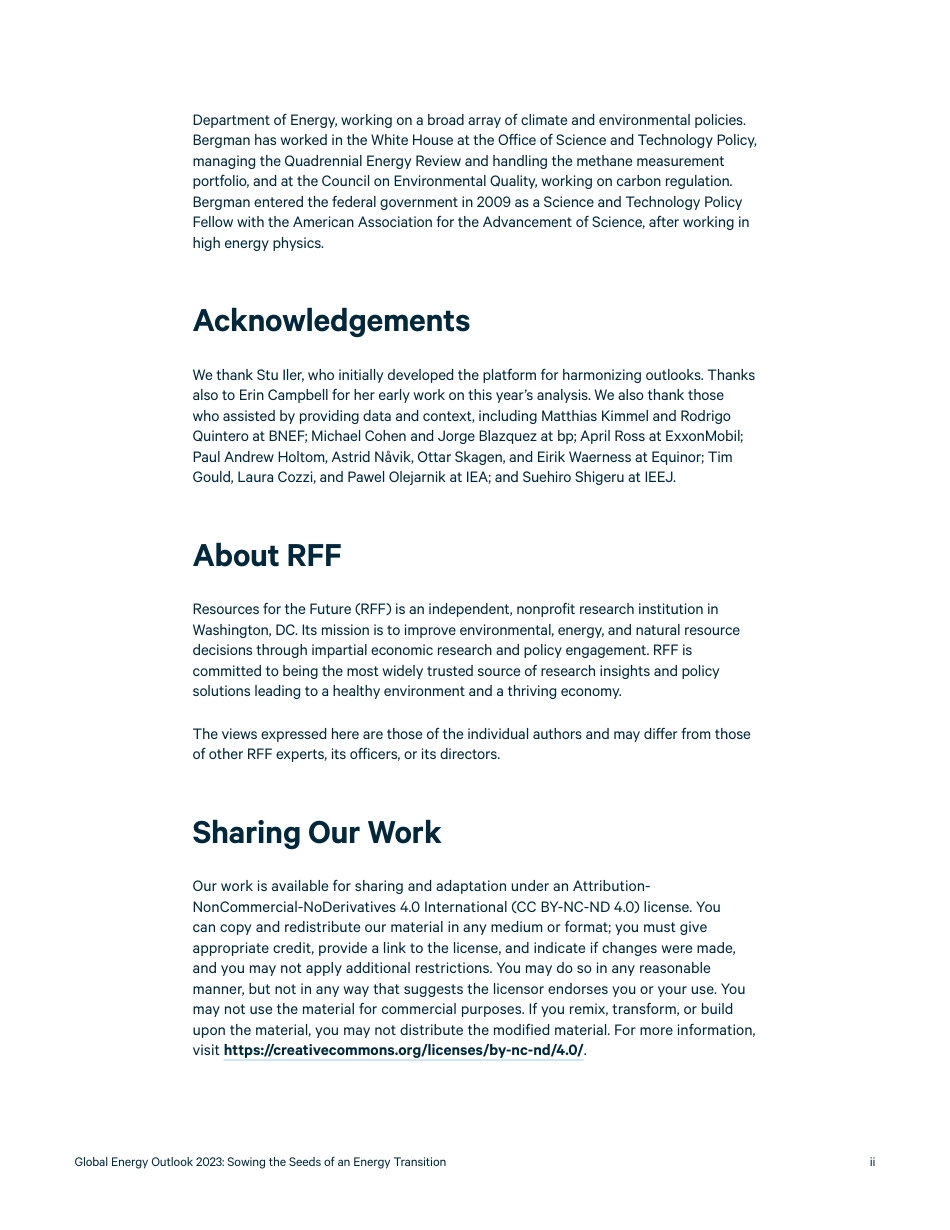Global Energy Outlook 2023: Sowing the Seeds of an Energy TransitionAGlobal Energy Outlook 2023: Sowing the Seeds of an Energy TransitionDaniel Raimi, Yuqi Zhu, Richard G. Newell, Brian C. Prest, and Aaron BergmanReport 23-02 March 2023Resources for the FutureiAbout the AuthorsDaniel Raimi is a fellow at Resources for the Future (RFF) and a lecturer at the Gerald R. Ford School of Public Policy at the University of Michigan. He works on a range of energy policy issues with a focus on tools to enable an equitable energy transition. He has published in academic journals including Science, Science Advances, Environmental Science and Technology, Journal of Economic Perspectives, Review of Environmental Economics and Policy, Energy Research and Social Science, and Energy Policy and in popular outlets including The New Republic, Newsweek, Slate, and Fortune. He has presented his research for policymakers, industry, and other stakeholders around the United States and internationally, including before the Energy and Mineral Resources Subcommittee of the US House’s Natural Resources Committee. In 2017, he published The Fracking Debate (Columbia University Press), a book that combines stories from his travels to dozens of oil- and gas-producing regions with a detailed examination of key policy issues.Yuqi Zhu joined RFF as a senior research associate in 2022 after receiving his master’s degree in public policy from the Harvard Kennedy School. Prior to graduate school, he worked in corporate development at Liberty Media, a media and communications holding company in Denver.Dr. Richard G. Newell is the president and CEO of RFF, an independent, nonprofit research institution that improves environmental, energy, and nat...



